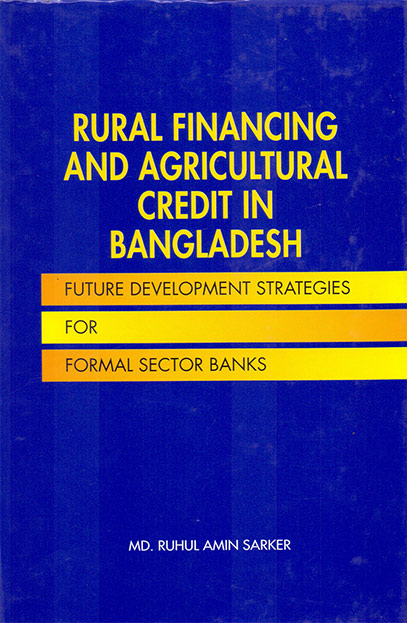
- Shop
- Rural Financing and Agricultural Credit in Bangladesh: Future Development Strategies for Formal Sector Banks
Rural Financing and Agricultural Credit in Bangladesh: Future Development Strategies for Formal Sector Banks
https://uplbooks.com/shop/9789840517602-rural-financing-and-agricultural-credit-in-bangladesh-future-development-strategies-for-formal-sector-banks-6647 https://uplbooks.com/web/image/product.template/6647/image_1920?unique=90f5a49
| Language: English |
Tags :
Book Info
Among the major socio-economic objectives of national development policy in Bangladesh is to ensure that developmental benefits do not accrue only to privileged sections in the community but percolate to the underprivileged social sections as well. However, the working of the institutional credit structure has yet to be evaluated against this principle in order to ascertain the extent to which the credit flow to agriculture has reached unprivileged sections of the rural community, comprising the country's small and marginal farmers. Considerable work relating to the general nature of credit needs among rural borrowers, the credit delivery systems and credit recovery systems functioning within institutional credit markets have been done by many individual researchers as well as international consultants. However, the study to examine the extent to which the credit flow to agriculture has reached the unprivileged sections of the rural community is yet a less explored area where more work needs to be done. This book, therefore, evaluates the performance of formal rural financial institutions and critically examines the agricultural credit needs of small and marginal farmers and their relative access to credit from the formal sector banks in Bangladesh. Standard numerical techniques have been made in this book for data analysis and presentation. The use of structured tables and graphs helped the exposition of insights gained from the study. Moreover, a comparison of the survey results enabled a diagnosis to be made about problems that currently characterize RFMs in Bangladesh, and suggest means for their redress. This book should be highly useful to the policy makers, agriculturists and field-level bankers. Since it contains huge credit related information on formal-sector banks in Bangladesh, should be of special interest to academic researchers as well.

MD. Ruhul Amin Sarkar
Md. Ruhul Amin Sarker is a career civil servant. He joined in Bangladesh Civil Service in 1982 and worked in different Ministries and Divisions with different capacities. Presently he is a Joint Secretary to the government and has been working as a Member Directing Staff (MDS) at the Bangladesh Public Administration Training Center (BPATC), Savar, Dhaka. Prior to the Civil service, he worked at Rupali Bank for a few years. He got his M.A. degree from Dhaka University and Ph.D. in Economics degree from North Bengal University, India. He obtained Banking Diploma Part-I and Part-II certificates while he was a banker.


